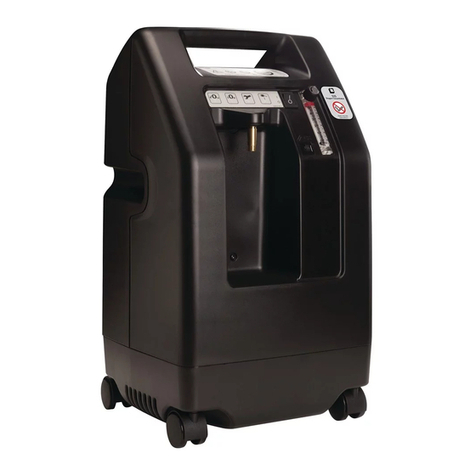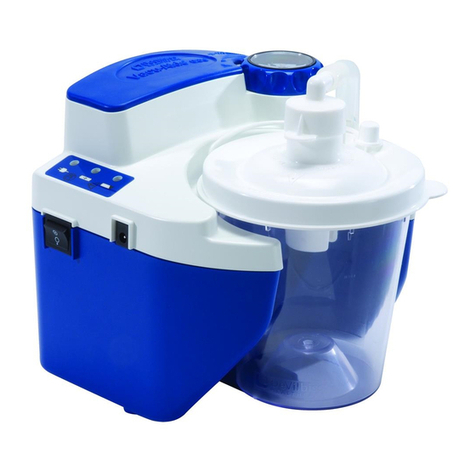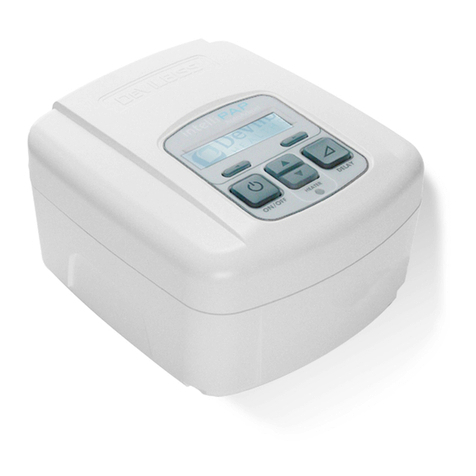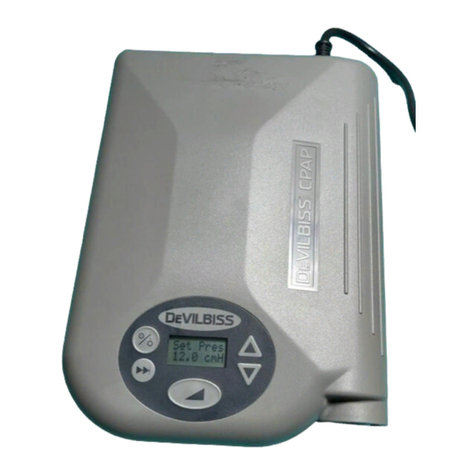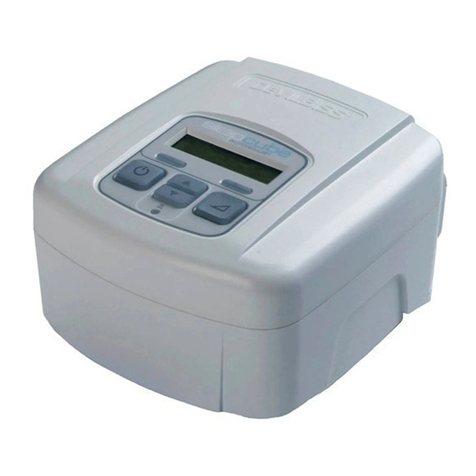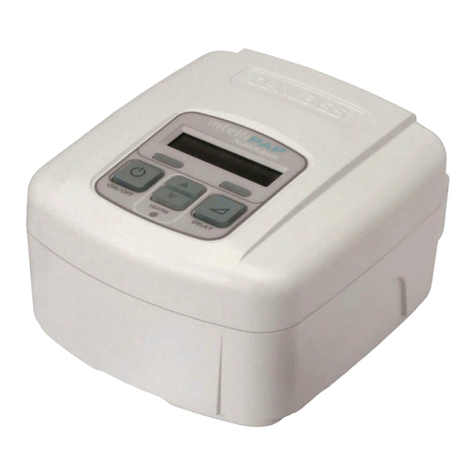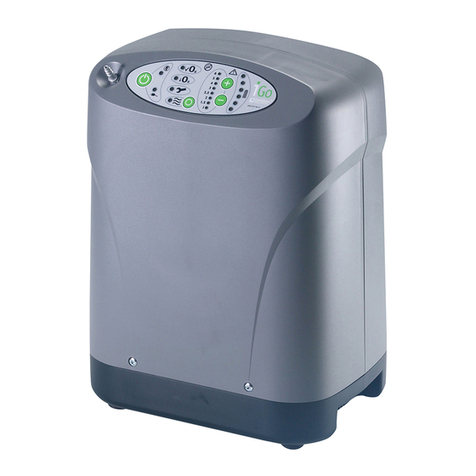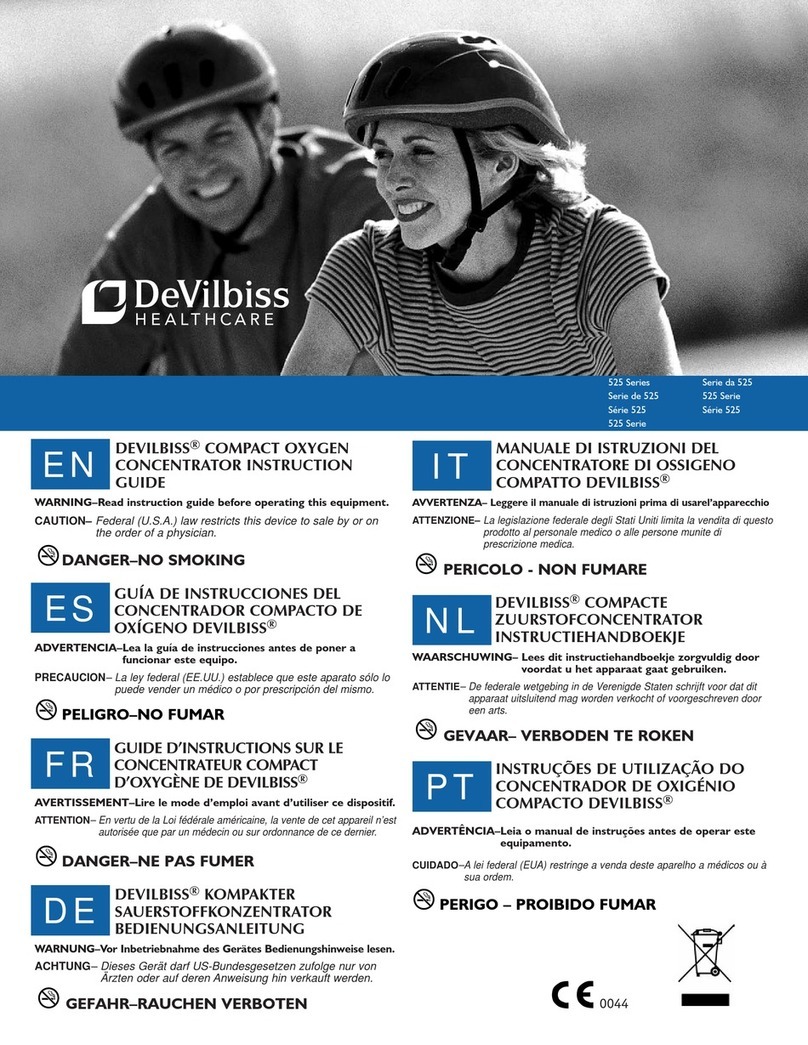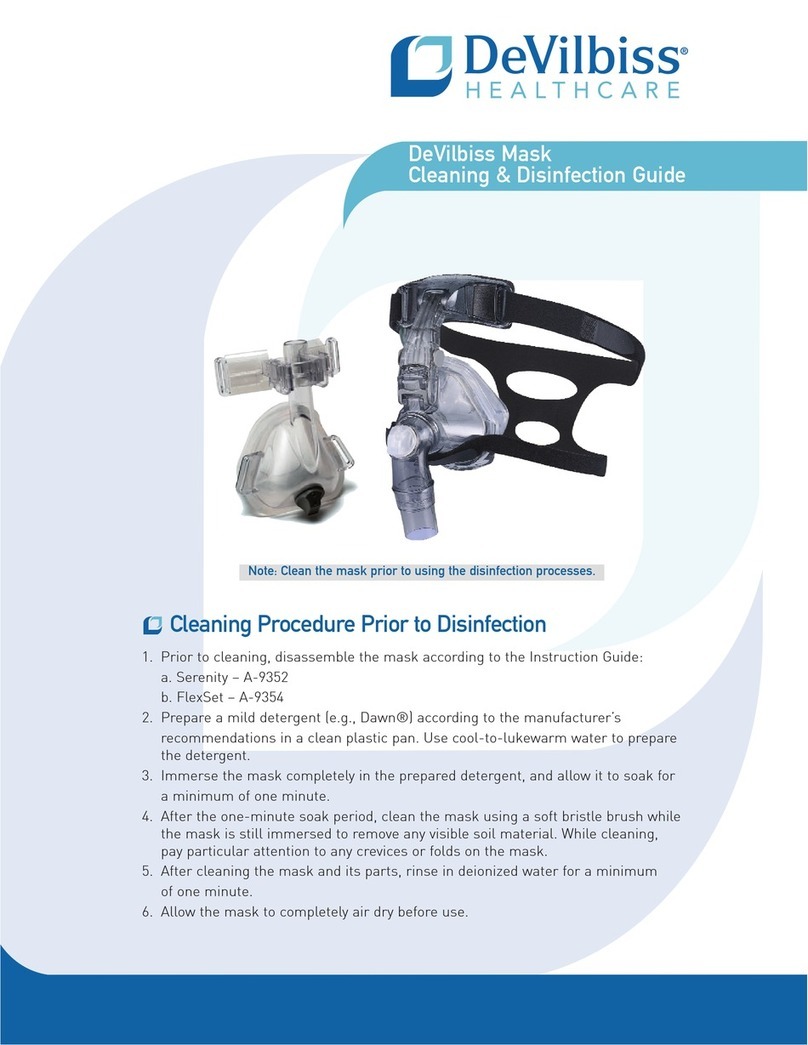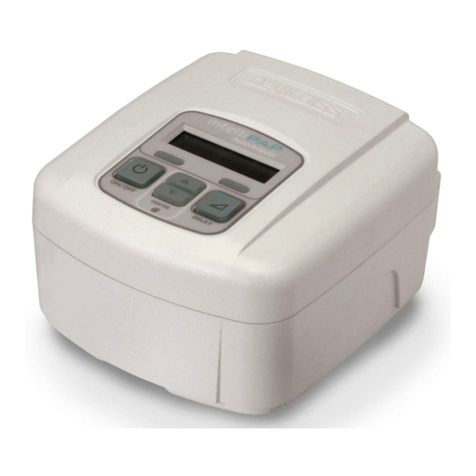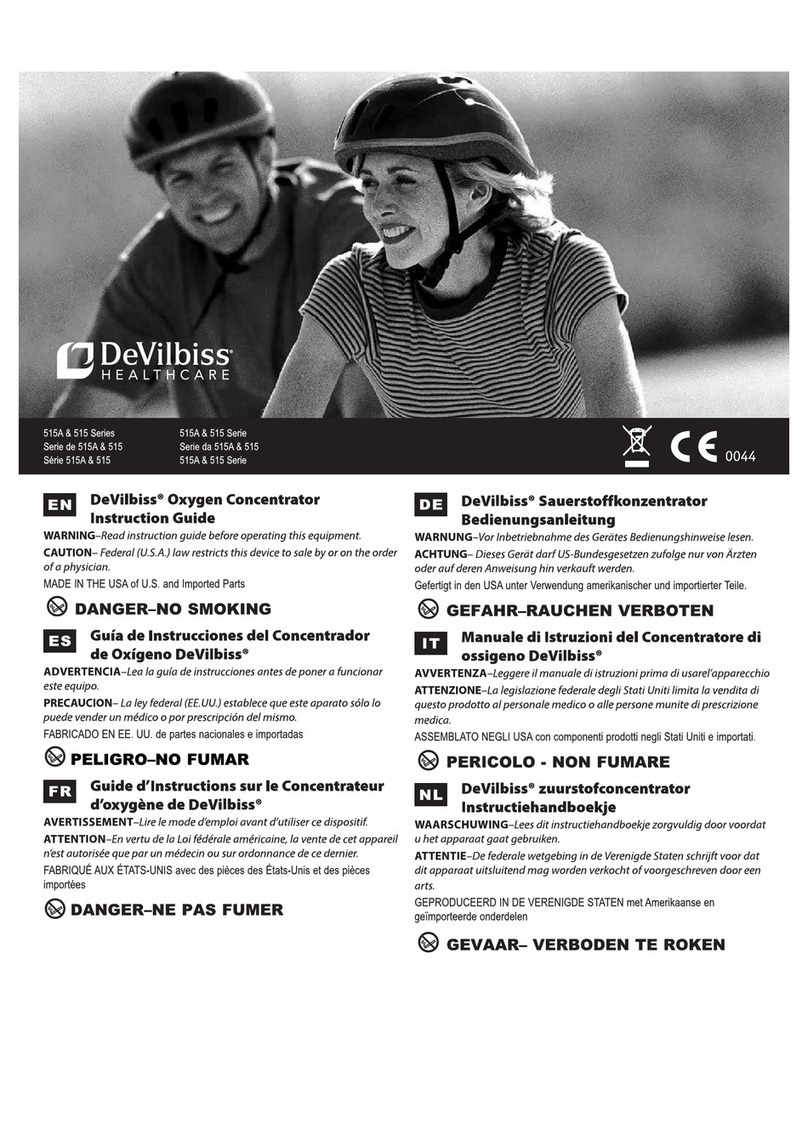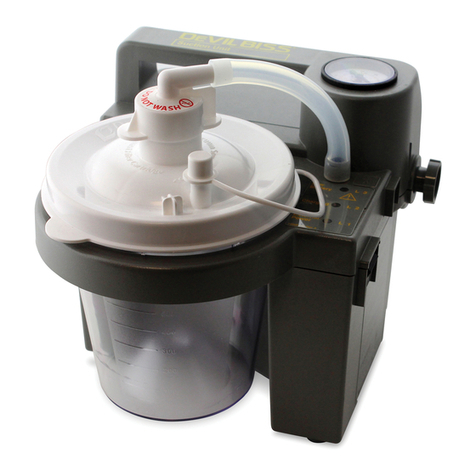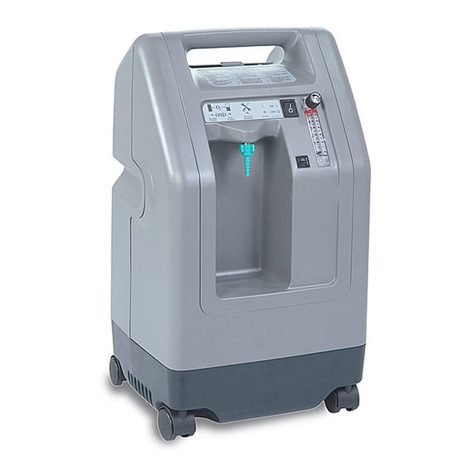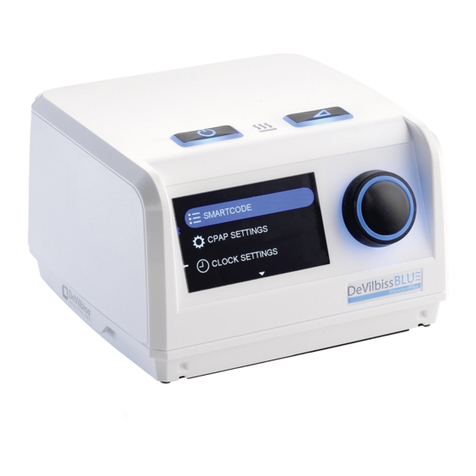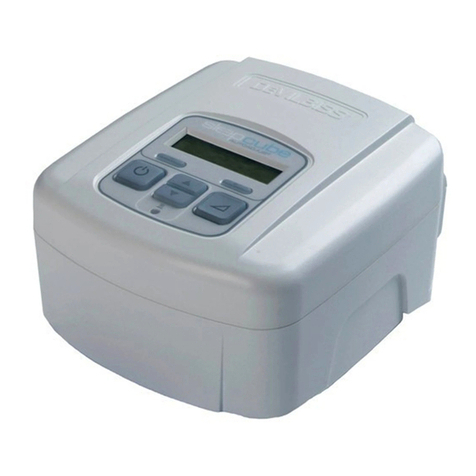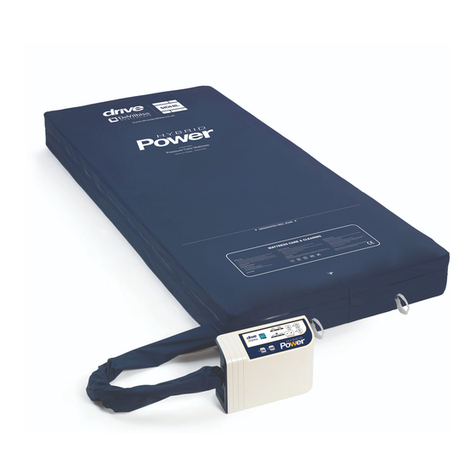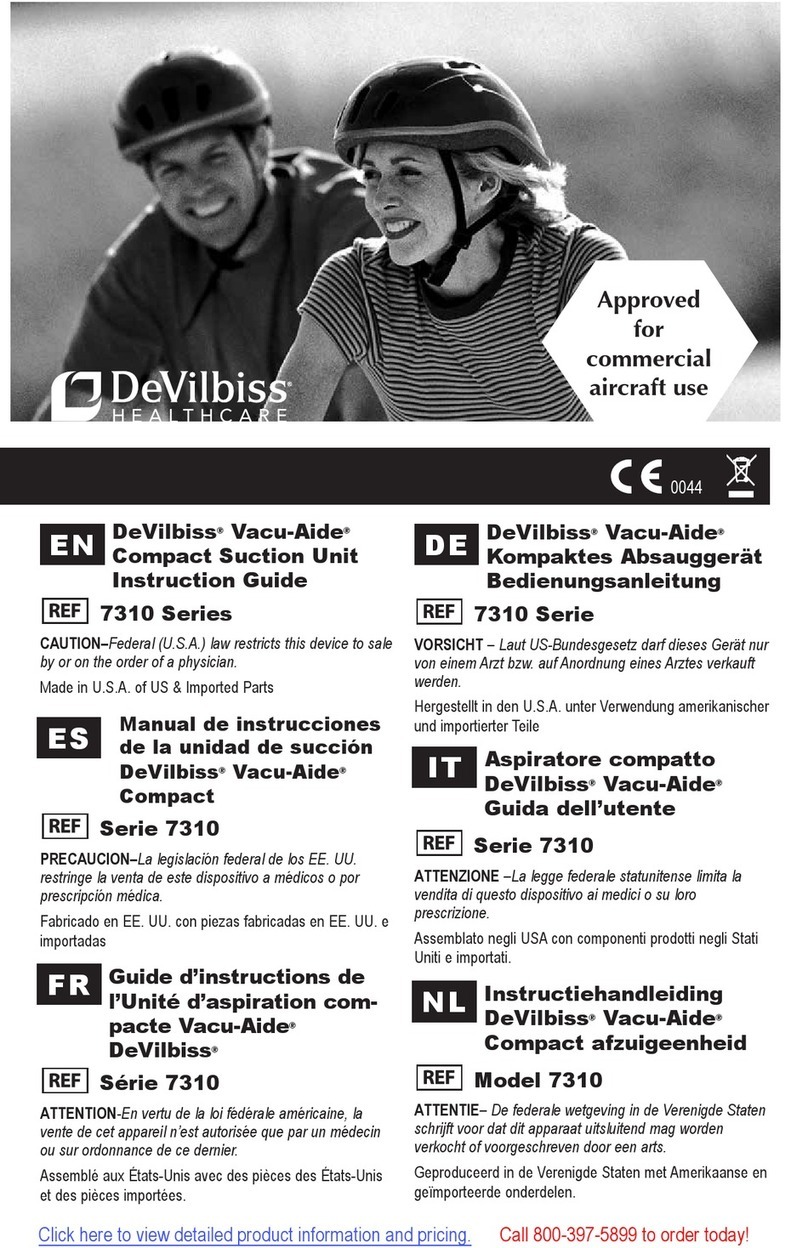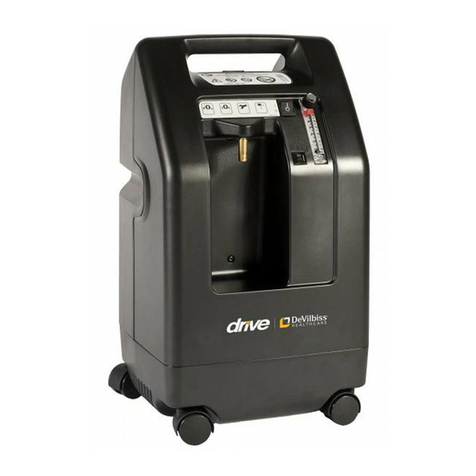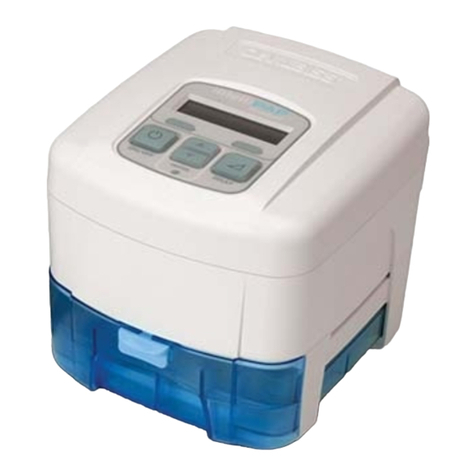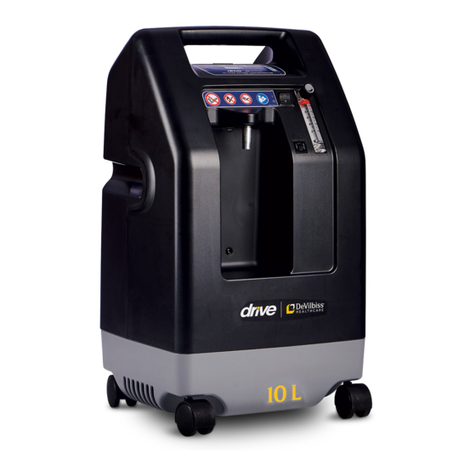
LT-2320
3
GENERAL INFORMATION
A. Important Safeguards
When servicing electrical products, basic safety precautions should
always be followed.
PLEASE READ ALL INSTRUCTIONS BEFORE
USING THIS DEVICE.
WARNING
A warning indicates the possibility of injury to the user or the
operator.
• Electric Shock Hazard – Do not use while bathing.
• Electric Shock Hazard – Do not immerse this device into water
or any other liquid.
• Electric Shock Hazard – Do not attempt to open or remove the
cabinet. There are no user-serviceable internal components. If
service is required, contact your equipment provider for
instructions on obtaining service. Opening or attempting to
service your device will void the warranty.
• Refer to International Standard IEC 60601-1 Ed 3.0 Amendment
1 for safety requirements applicable to Medical Electrical
Systems
• Oxygen supports combustion. To avoid possible physical injury,
do not smoke while using this device with supplemental oxygen.
Do not use this device near hot objects, volatile substances or
sources of open ames.
• Always turn on the CPAP device before turning on the oxygen
source. Turn off the oxygen source before turning off the device.
Never allow the oxygen source to run continuously while
connected to the device if the device is not in use. If the device is
not being used, turn off the oxygen ow.
• CPAP pressure must be set higher than 8 cmH2Ofor
supplemental oxygen use to prevent patient breathing pattern
from forcing oxygen back into the CPAP.
• At a xed ow rate of supplemental oxygen, the inhaled oxygen
concentration will vary depending on the pressure setting, patient
breathing pattern, mask selection and leak rate. This warning
applies to most types of CPAP devices.
• The device should be used only with vented CPAP masks
recommended by DeVilbiss, your physician or respiratory
therapist. These include nasal, full face, nasal pillow and nasal
cannula masks designed for CPAP use. Do Not use a non-vented
mask with this CPAP device.
• To avoid rebreathing of exhaled air, do not use a CPAP mask
unless the device is turned on and providing a supply of air.
Venting in the mask should never be blocked. When the device is
turned on and providing a fresh supply of air, exhaled air is
ushed out of the mask vent. However, when the device is not
operating, exhaled air may be rebreathed. Rebreathing of
exhaled air for longer than several minutes can, in some
circumstances, lead to suffocation. This warning applies to most
CPAP devices.
• The device is not a life support device and may stop operating
with certain device faults or with a power failure. It is intended to
be used on spontaneously breathing individuals weighing 66
lbs/30 kg or greater.
• To avoid electric shock, always unplug power cord from wall
outlet power source when cleaning or servicing.
• The following surface temperatures may exceed 41˚C under
certain conditions:
External surface of CPAP................................................ 43˚C
Patient tubing connector..................................................45˚C
Encoder shaft (with control knob removed).....................42˚C
Humidier heater plate ....................................................65˚C
External power supply ..................................................... 42˚C
• Equipment not suitable for use in the presence of a ammable
anesthetic mixture with air or with oxygen or nitrous oxide.
• Medical Electrical Equipment needs special precautions
regarding EMC and needs to be installed and put into service
according to the Electromagnetic Compatibility [EMC] information
provided in the accompanying documents.
• Portable and Mobile RF Communications Equipment can affect
Medical Electrical Equipment.
• The equipment or system should not be used adjacent to or
stacked with other equipment. If adjacent or stacked use is
necessary, the equipment or system should be observed to verify
normal operation in the conguration in which it will be used.
• If you are using a full face mask (a mask covering both your
mouth and your nose), the mask must be equipped with a safety
(entrainment) valve.
• Do not connect the device to an unregulated or high pressure
oxygen source.
• Do not use the device near a source of toxic or harmful vapors.
• Do not use this device if the room temperature is warmer than
40˚ C (104˚ F). If the device is used at room temperatures
warmer than 40˚ C (104˚ F), the temperature of the airow may
exceed 43˚ C (109˚ F). This could cause irritation or injury to your
airway.
• Do not operate the device in direct sunlight or near a heating
appliance. These conditions can increase the temperature of the
air coming out of the device.
• Contact your health care professional if symptoms of sleep
apnea recur.
• If you notice any unexplained changes in the performance of this
device, if it is making unusual or harsh sounds, if it has been
dropped or mishandled, if water is spilled into the enclosure or if
the enclosure is broken, disconnect the power cord and
discontinue use. Contact your home care provider.
• Periodically inspect electrical cords and cables for damage or
signs of wear. Discontinue use and replace if damaged.
CAUTION
A Caution indicates the possibility of damage to the device.
• For proper operation, place system on a at, sturdy, level
surface. Do not place the device where it can be knocked onto
the oor or where the power cord may create a trip hazard.
• Never block air openings of the device. Do not insert objects into
any openings or tubes.
• Use only accessories recommended by DeVilbiss.
• The USB port located on the back of the device is for provider
use only. The port must only be used with accessories approved
for use by DeVilbiss. Do not attempt to attach any other device to
this port as it may damage the CPAP or the accessory device.
• Only the DeVilbiss DV6 series Heated Humidier system is
